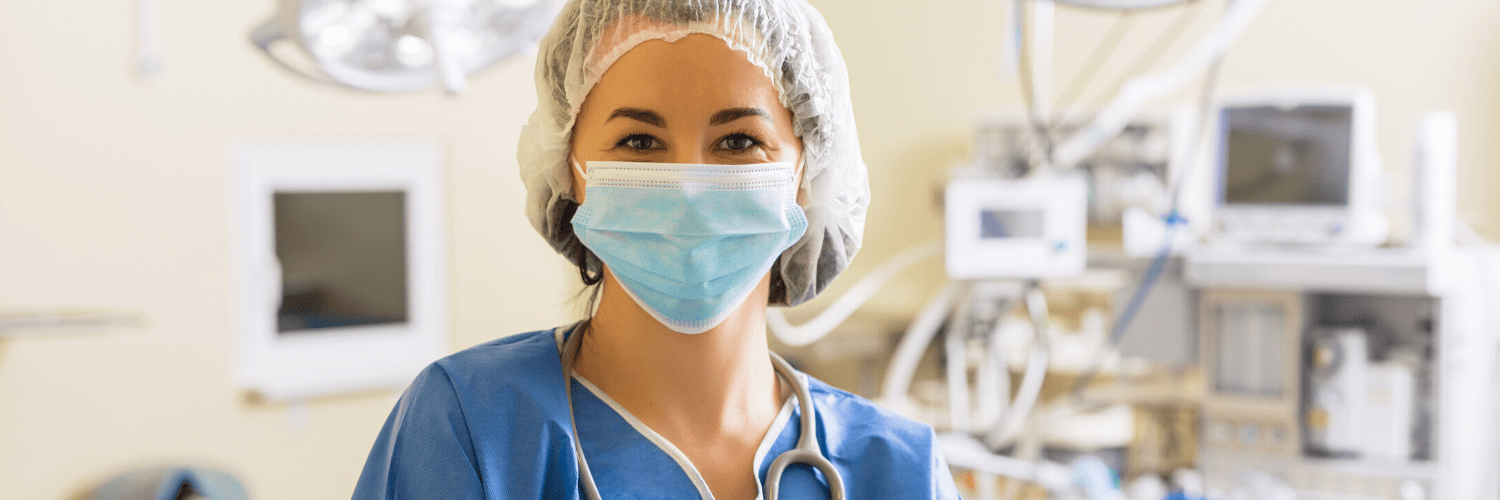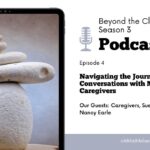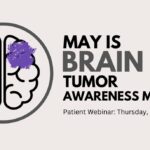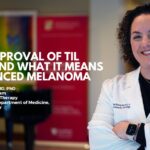

By, Vallerie A. Malkin
In August of 2017, AIM at Melanoma hosted the inaugural Women in Melanoma Initiative in Leesburg, Virginia. Twenty-five female oncologists from an array of notable institutions across the U.S. gathered for a weekend conference like none other.
Organized by the late Valerie Guild and current AIM President, Samantha Guild, the conference has continued each year since 2017, and the planning is in full swing for 2020. The initiative emphasizes both patient-centric and physician-centric cross-disciplinary topics that are not typically a major focus at many oncology meetings. These varied subjects include the fertility-related side effects of new immunotherapies and targeted therapies; whole-patient care; obstacles to academic advancement for women; and the use of social media by oncologists.
“WIM presents care-based issues with the goal of improving the patient experience,” says WIM attendee April Salama, M.D., Associate Professor of Medicine at Duke University. “The topics are patient-centric.” Salama is a medical oncologist focusing solely on the treatment of cutaneous malignancies, in particular melanoma.
The meetings are also physician-centric—specifically female physician-centric. Yana Najjar, M.D., an Assistant Profession of Medicine at University of Pittsburgh School of Medicine, UPMC-Hillman Cancer Center, noted that she appreciates WIM because it allows her to connect with women who are more senior than herself, as well as those who are just starting in the field: “There is a very empowering community at the conference,” she says.
The weekend kicks off with a dinner on Friday night. Saturday morning there is breakfast and stage-setting remarks by AIM, and then the mostly women panelists conduct their sessions. Panelists may be the oncologists themselves or other guest speakers. They break for lunch and then continue with more sessions. After the last presentation, AIM ends with comments on lessons learned, and then there is a dinner. The event culminates in a brunch on Sunday morning.
The WIM schedule intentionally offers time during the weekend’s meals for the attendees to network, plan research collaboration, and expand upon the day’s patient-care topics—and the oncologists make keen use of the time.
“Doctors don’t always get the opportunities to have these kinds of discussions; the demands of the work-day just don’t allow it,” says Samantha Guild. “Now that so many more women are becoming doctors and melanoma-focused women oncologists are increasing in number, it’s good to offer that support.”
Improving patient care is the goal
To Najjar, WIM has been inspirational and informative, combining science and communication, which results in a whole-patient approach to caregiving that she and other doctors are seeking when they attend the conference. She loves getting outside of the clinic and delving into issues that she doesn’t have time for during her workday—especially issues that improve patient care.
“It’s an enormous privilege to do this work, and first and foremost, to take care of these patients,” Najjar says.

Yana Najjar, MD, UPMC
Back in the office, Najjar employs some of the lessons about doctor-patient communication that she learned through role-playing exercises at WIM: “I always try to remember not to use jargon terms,” she says, noting that this exercise solidified always remembering that patients simply don’t understand medical jargon and it’s confusing to them when physicians use it. “I also try to follow this guideline that I learned at WIM: After giving the patient two facts, I pause and give them time to digest what they have heard.”
“A huge part of doing this job well is communication,” says Najjar.
Salama, too, draws on role-playing exercises from WIM when seeing patients. With survivorship strong, she explains, doctors need to understand the mindset of their patients and to be mindful of the unique concerns of survivors. “Through the exercises, l was able to experience the medical interaction from the other side—the patient side—and this turned out to be invaluable and a tool I use in my daily practice,” she explains.
The WIM meetings explain Salama, are forward-thinking and ahead of the curve in terms of their focus on survivorship, long-term outcomes, quality of care, and wellness.
Supporting women oncologists, supporting each other
Najjar’s interest in medicine began when she was a child and liked playing with a stethoscope. People would ask her, “Are you playing nurse?” and she would always reply, “No, I’m playing doctor.”
Like so many of the WIM attendees, she was drawn to the complexity of oncology—both the complexity of caring for oncology patients and the complexity of the medicine. And WIM is a perfect place to focus on her passion with others who share it.
Najjar recalls attending her first WIM meeting—incidentally, the day after she became a faculty member—and how special it was to be able to put real faces to the names of well-known women whose publications she had read. “We were in this beautiful setting, and it was really wonderful to meet everybody,” she recalls.
She’s attended every WIM session thus far and brings a passion to the forum as well as her own expertise: In 2018 Najjar received a Department of Defense Translational Team Science Award to study tumor immunology and the remodeling of the tumor micro-environment to benefit patients who are resistant to treatment. Based on collaborations she established at WIM, Najjar has collected data on the largest data set of uveal melanoma patients treated with immunotherapy, with these findings soon to be published, with many of the WIM attendees as co-authors.

April K.S. Salama, MD, Medical Oncologist, Duke Health
Salama’s path to medicine also started when she was young. “I have always known since high school, when my grandfather had cancer, that I wanted to be an oncologist and wanted to work in clinical research to help bring new things to the clinic for patients,” says Salama. “I loved molecular biology, and I wanted to make a difference.”
Each year at WIM, Salama connects with other women who are equally interested in science and melanoma. “Women in science is one of my passions,” she says. “Only about 20%-30% percent of oncologists are women, so I think it’s really critical to support each other. And I think it’s critical to pay it forward.” She credits strong mentors for guiding her to where she is now and wants to do the same for other women.
Salama recognizes that women don’t advance at the same rate as men across oncology fields, and there continues to be a gender pay gap but notes that endeavors like WIM can help address these disparities.
Indeed, Salama reports that connections made at this conference have resulted in publications, high profile committee appointments, and invitations to talks at the national level for multiple attendees—all areas in which the support and advocacy of women for other women can be transformational.
The cure: Are we there yet?
Yes, treatments are working, and yes, there are conferences like WIM that aim to improve patient care until there is a cure. But there is still much work to be done to rid the world of melanoma.
To that end, Najjar notes that Pittsburgh is one of the six global locations of AIM’s Melanoma Tissue Bank Consortium that will provide her and her colleagues with fresh frozen primary tissue as they do critical research to find the cure. She is thrilled to have this resource so that she can help her patients in the clinic and, ultimately, in her lab.
Says Najjar, “My relationship with patients is really sacred, the guiding light of everything that I do, and every single research question I ever asked has been sparked by a patient sitting in front of me. It’s never lost on me that first and foremost my job is to take care of patients – everything else is secondary.”
Salama agrees that research is critical for patients: “To move the needle there will need to be continued trials and research,” she says. “Getting to 100 percent survival is going to take many different approaches, but it’s something I would love to see in my lifetime.”
We think all WIM attendees would agree.
Entradas recientes

Navigating the Journey Together – Conversations with Melanoma Caregivers

May is Brain Tumor Awareness Month

President’s Letter | April 2024

Celebrating a Milestone: 20 Years of the Dallas Steps Against Melanoma Walk

